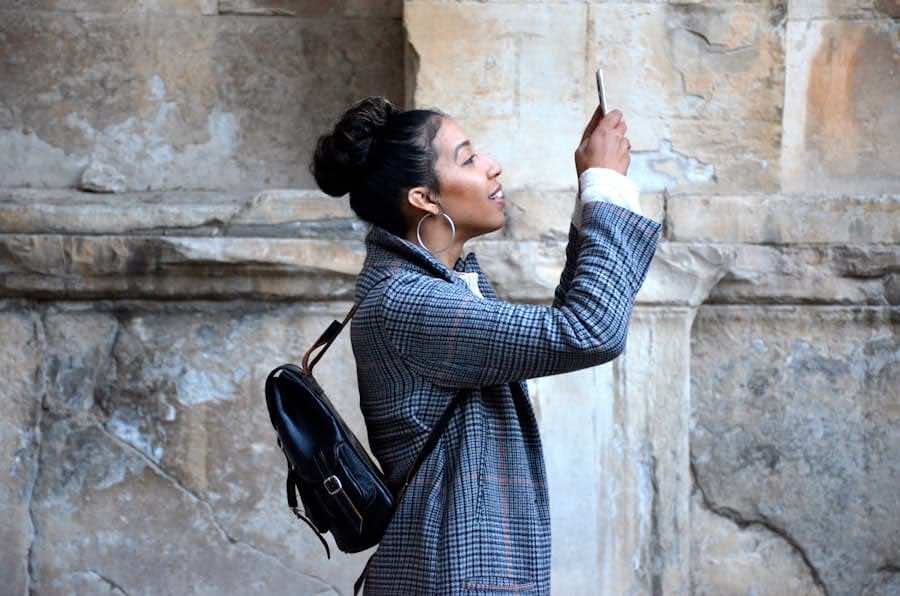In the contemporary marketing landscape, the emergence of influencer-led product launch strategies has revolutionised how brands introduce new offerings to the market. This approach leverages the credibility and reach of social media influencers, who have cultivated dedicated followings across various platforms. By harnessing the power of these influencers, brands can create authentic connections with potential customers, thereby enhancing engagement and driving sales.
The shift towards influencer marketing is not merely a trend; it reflects a fundamental change in consumer behaviour, where traditional advertising methods are often viewed with scepticism. Instead, consumers are increasingly turning to trusted figures within their social circles for recommendations and insights. The effectiveness of influencer-led strategies lies in their ability to create a narrative around a product that resonates with the target audience.
Influencers possess the unique capability to present products in a relatable context, making them more appealing to consumers. This strategy is particularly beneficial for new product launches, where establishing brand awareness and generating buzz is crucial. As brands navigate this dynamic landscape, understanding the intricacies of influencer partnerships becomes essential for maximising the impact of product launches.
Summary
- Influencer-led product launch strategy is a powerful marketing approach that leverages the influence of social media personalities to promote and sell products.
- Influencers play a crucial role in product launches by creating authentic and engaging content that resonates with their followers and drives interest in the brand’s offerings.
- Identifying the right influencers for your brand involves considering factors such as audience demographics, engagement rates, and brand alignment to ensure a successful partnership.
- Collaborating with influencers for a successful product launch requires clear communication, mutual understanding of goals, and creative freedom for the influencers to showcase the product in an authentic way.
- Leveraging social media platforms such as Instagram, YouTube, and TikTok can maximise the impact of influencer-led product launches by reaching a wide and engaged audience.
Understanding the Role of Influencers in Product Launches
Influencers serve as modern-day brand ambassadors, wielding significant power in shaping consumer perceptions and behaviours. Their role in product launches extends beyond mere promotion; they act as storytellers who can weave a narrative around a product that aligns with their personal brand and resonates with their audience. This storytelling aspect is vital, as it allows influencers to present products in a way that feels organic and authentic, rather than forced or overly commercialised.
For instance, a beauty influencer might showcase a new skincare line by incorporating it into their daily routine, demonstrating its benefits through personal experience rather than simply listing features. Moreover, influencers often have a deep understanding of their audience’s preferences and pain points, enabling them to tailor their messaging effectively. This insight allows brands to reach niche markets that may be overlooked by traditional advertising methods.
For example, a fitness influencer promoting a new line of activewear can provide valuable feedback on the product’s performance during workouts, addressing specific concerns that potential customers may have. This level of engagement fosters trust and credibility, which are essential components in driving consumer decisions during a product launch.
Identifying the Right Influencers for Your Brand

Selecting the appropriate influencers for a product launch is a critical step that can significantly influence the campaign’s success. Brands must consider various factors when identifying potential partners, including audience demographics, engagement rates, and content style. A thorough analysis of an influencer’s follower base can reveal whether their audience aligns with the brand’s target market.
For instance, if a luxury skincare brand aims to reach affluent consumers, collaborating with influencers who have a following predominantly composed of young adults may not yield the desired results. Additionally, brands should assess the authenticity of an influencer’s engagement. High follower counts can be misleading if those followers are not genuinely interested in the content being shared.
Tools such as social media analytics platforms can provide insights into engagement rates and audience interactions, helping brands identify influencers who foster genuine connections with their followers. Furthermore, it is essential to consider the influencer’s previous collaborations and overall brand alignment. An influencer who has consistently promoted eco-friendly products would be an ideal partner for a sustainable fashion brand, as their values would resonate with both the influencer’s audience and the brand’s mission.
Collaborating with Influencers for a Successful Product Launch
Once the right influencers have been identified, establishing a collaborative relationship is paramount for a successful product launch. This collaboration should be built on mutual respect and shared goals, allowing both parties to contribute creatively to the campaign. Brands should provide influencers with comprehensive information about the product, including its unique selling points and intended messaging.
This transparency enables influencers to craft authentic content that accurately reflects the brand’s vision while still maintaining their unique voice. Moreover, brands should encourage influencers to experiment with different content formats to engage their audiences effectively. For instance, an influencer might create unboxing videos, tutorials, or live Q&A sessions to showcase the product in various contexts.
Such diverse content not only keeps the audience engaged but also allows for multiple touchpoints throughout the launch period. Additionally, offering influencers exclusive access to products or behind-the-scenes experiences can further enhance their connection to the brand and generate excitement among their followers.
Leveraging Social Media Platforms for Maximum Impact
Social media platforms play a pivotal role in amplifying the reach of influencer-led product launches. Each platform offers unique features that can be harnessed to maximise engagement and visibility. For example, Instagram’s visual-centric nature makes it an ideal platform for beauty and fashion brands to showcase products through high-quality images and videos.
Influencers can utilise Instagram Stories and Reels to create dynamic content that captures attention quickly and encourages interaction. On platforms like TikTok, short-form video content has become increasingly popular, allowing influencers to engage audiences through creative storytelling and challenges. Brands can capitalise on this trend by encouraging influencers to create viral content that showcases their products in entertaining ways.
Additionally, utilising hashtags strategically can help increase discoverability and encourage user-generated content, further expanding the campaign’s reach. By tailoring content to suit each platform’s strengths, brands can ensure that their product launch resonates with diverse audiences across various social media channels.
Measuring the Success of an Influencer-Led Product Launch

Evaluating the effectiveness of an influencer-led product launch requires a comprehensive approach that encompasses various metrics and key performance indicators (KPIs). Brands should establish clear objectives prior to the launch, such as increasing brand awareness, driving website traffic, or boosting sales figures. These objectives will guide the selection of relevant metrics for assessment.
For instance, if the goal is to enhance brand awareness, tracking impressions and reach across social media platforms will provide insights into how many people were exposed to the campaign. Sales data is another critical metric for measuring success. Brands can track conversions generated through unique discount codes or affiliate links provided to influencers.
This data not only highlights the direct impact of influencer partnerships on sales but also helps in understanding which influencers were most effective in driving conversions. Additionally, analysing audience engagement metrics such as likes, comments, shares, and saves can provide valuable insights into how well the content resonated with viewers. By combining quantitative data with qualitative feedback from consumers, brands can gain a holistic understanding of their campaign’s performance.
Overcoming Challenges in Influencer-Led Product Launch Strategy
While influencer-led product launches offer numerous advantages, they are not without challenges. One significant hurdle is ensuring alignment between the brand’s values and those of the influencer. A mismatch can lead to backlash from consumers who perceive the partnership as disingenuous or opportunistic.
To mitigate this risk, brands must conduct thorough research on potential influencers’ past collaborations and public personas before entering into partnerships. Another challenge lies in managing expectations regarding deliverables and timelines. Influencers often juggle multiple partnerships simultaneously, which can lead to delays or miscommunication regarding content creation schedules.
Establishing clear communication channels and setting realistic deadlines can help alleviate these issues. Furthermore, brands should remain flexible and open to creative input from influencers; allowing them creative freedom often results in more authentic content that resonates better with audiences.
Future Trends in Influencer-Led Product Launches
As the digital landscape continues to evolve, so too will influencer-led product launch strategies. One emerging trend is the rise of micro-influencers—individuals with smaller but highly engaged followings—who often boast higher engagement rates than their more prominent counterparts. Brands are increasingly recognising the value of these influencers in reaching niche markets and fostering authentic connections with consumers.
Additionally, advancements in technology are likely to shape how brands approach influencer marketing in the future. The integration of augmented reality (AR) and virtual reality (VR) into social media platforms presents exciting opportunities for immersive product experiences during launches. For instance, beauty brands could allow consumers to virtually try on products through AR filters created by influencers, enhancing engagement and driving interest.
Furthermore, as consumers become more discerning about authenticity and transparency in marketing practices, brands will need to prioritise ethical collaborations with influencers who genuinely align with their values. This shift towards authenticity will likely lead to more long-term partnerships rather than one-off campaigns, fostering deeper connections between brands and their audiences. In conclusion, influencer-led product launch strategies represent a powerful tool for brands seeking to navigate an increasingly competitive marketplace.
By understanding the role of influencers, identifying suitable partners, collaborating effectively, leveraging social media platforms, measuring success accurately, overcoming challenges proactively, and staying attuned to future trends, brands can harness this dynamic approach to drive impactful product launches that resonate with consumers on a personal level.
When considering an influencer-led product launch strategy, it is important to also think about the potential benefits of becoming a freelancer. According to a recent article on businesscasestudies.co.uk, freelancing offers flexibility and independence, which can be advantageous when working with influencers to promote a new product. Additionally, it may be beneficial to invest in high-quality article writing services to effectively communicate the benefits of the product. For tips on finding the best article writing services for your business, check out another informative article on businesscasestudies.co.uk. Lastly, for those looking to diversify their marketing strategies, exploring how to trade cryptocurrency could be a valuable option. Learn more about cryptocurrency trading in the article on businesscasestudies.co.uk.
FAQs
What is an Influencer-Led Product Launch Strategy?
An influencer-led product launch strategy is a marketing approach that involves collaborating with social media influencers to promote and launch a new product or service to their followers.
How does an Influencer-Led Product Launch Strategy work?
In an influencer-led product launch strategy, brands partner with influencers who have a large and engaged following on platforms such as Instagram, YouTube, or TikTok. The influencers create content that showcases the new product or service, and their followers are encouraged to try or purchase it.
What are the benefits of an Influencer-Led Product Launch Strategy?
An influencer-led product launch strategy can help brands reach a wider audience, build credibility, and generate buzz around their new product or service. Influencers’ authentic and relatable content can also drive engagement and conversions.
How do brands choose the right influencers for a product launch strategy?
When selecting influencers for a product launch strategy, brands consider factors such as the influencer’s relevance to their target audience, engagement rates, authenticity, and alignment with the brand’s values and image.
What are some examples of successful influencer-led product launches?
Successful influencer-led product launches include collaborations between beauty brands and makeup artists, fitness brands and health influencers, and fashion brands and style bloggers. These partnerships have resulted in increased brand awareness and sales.
